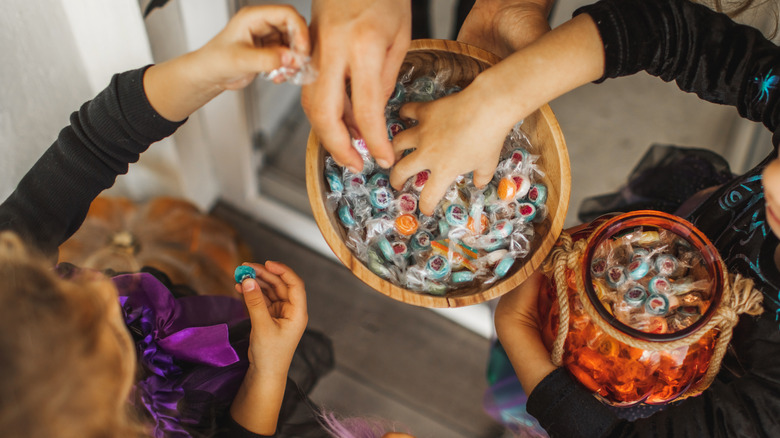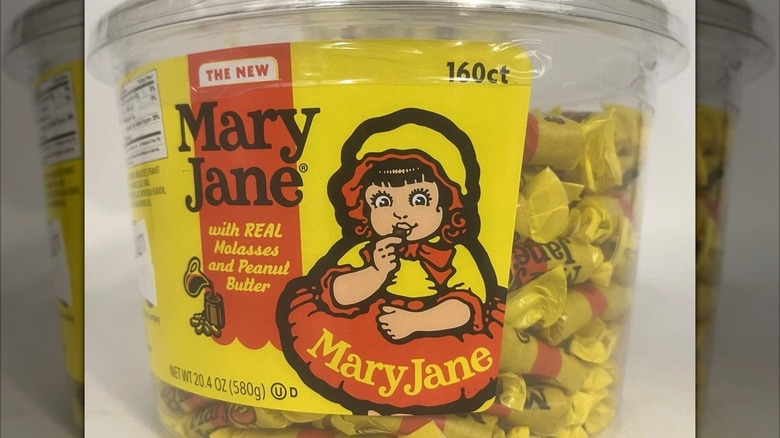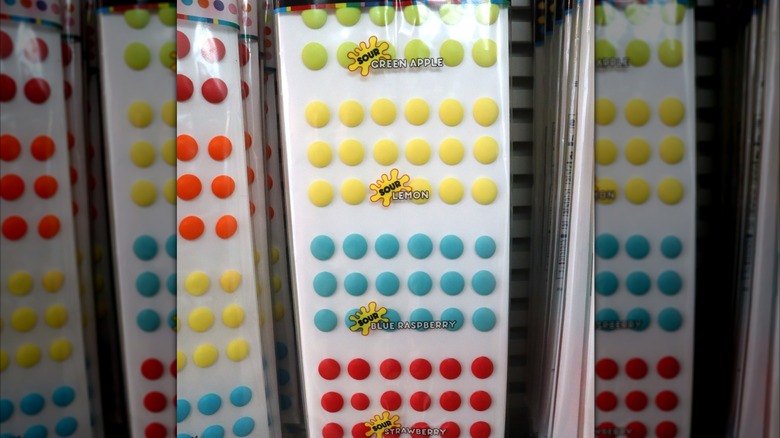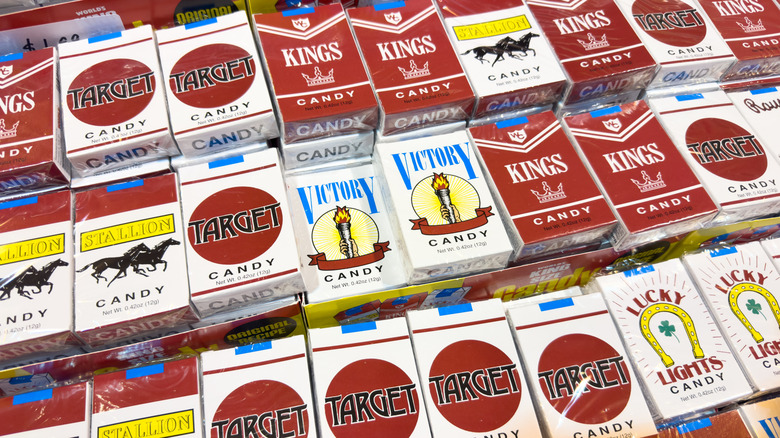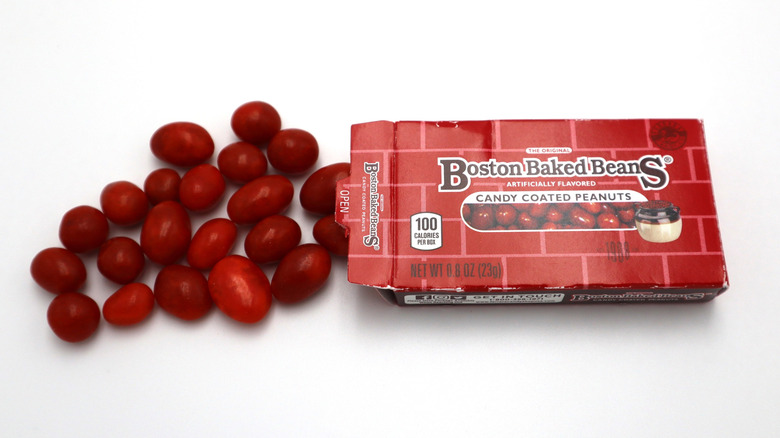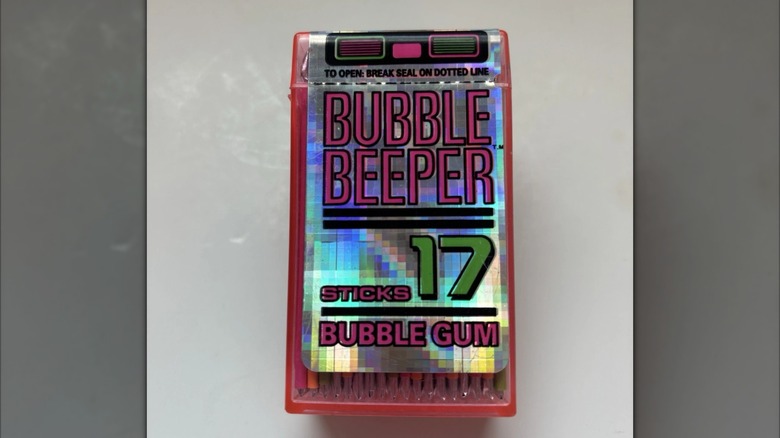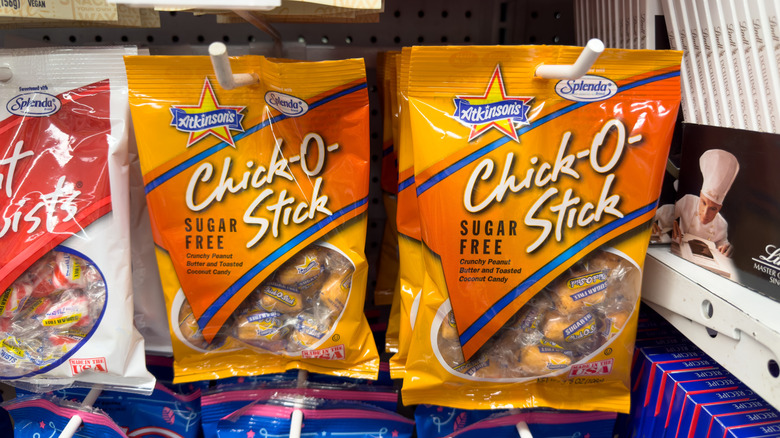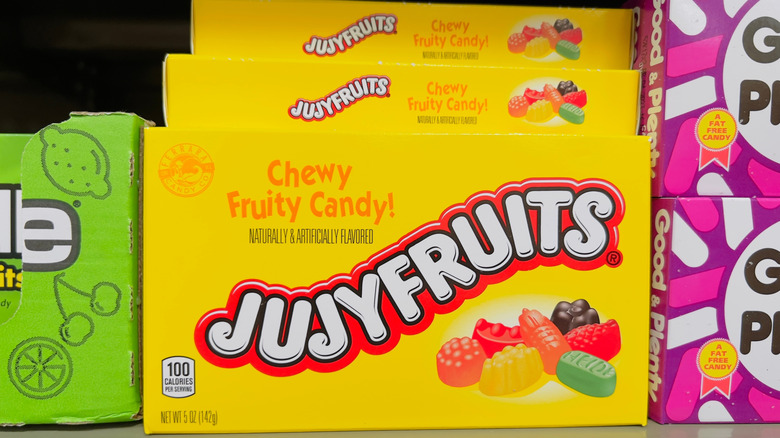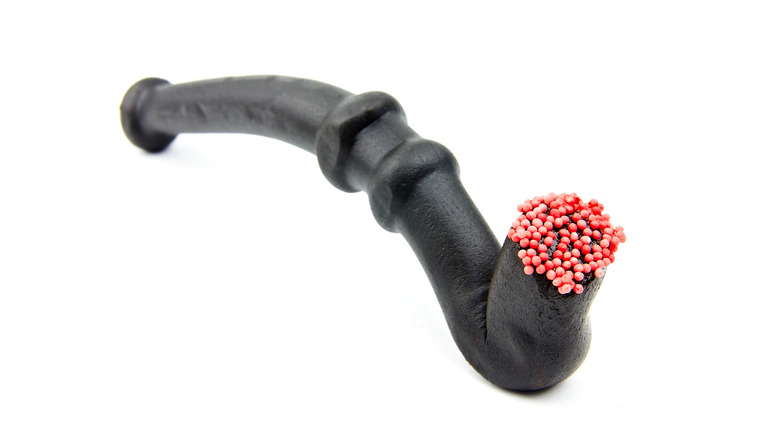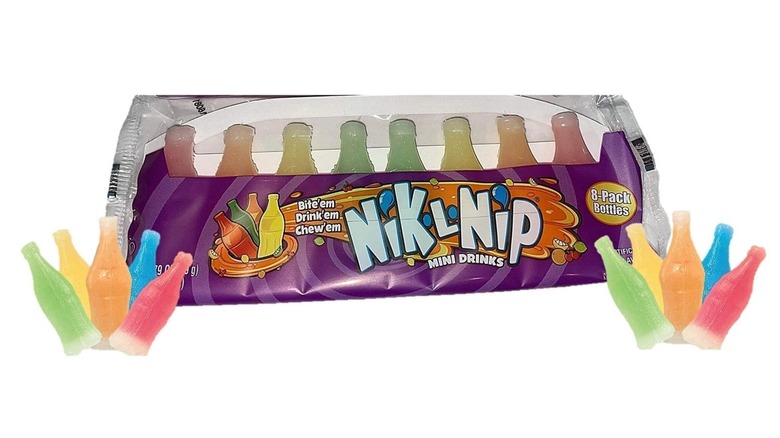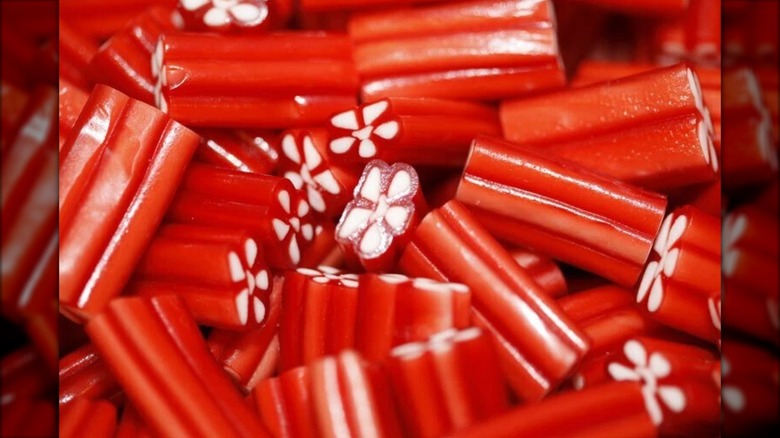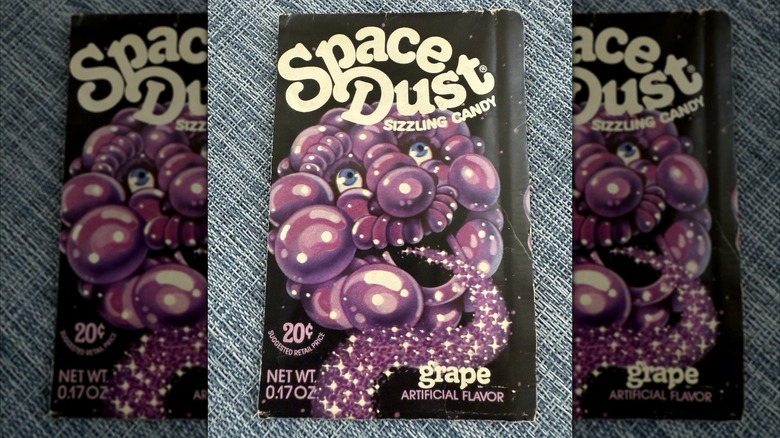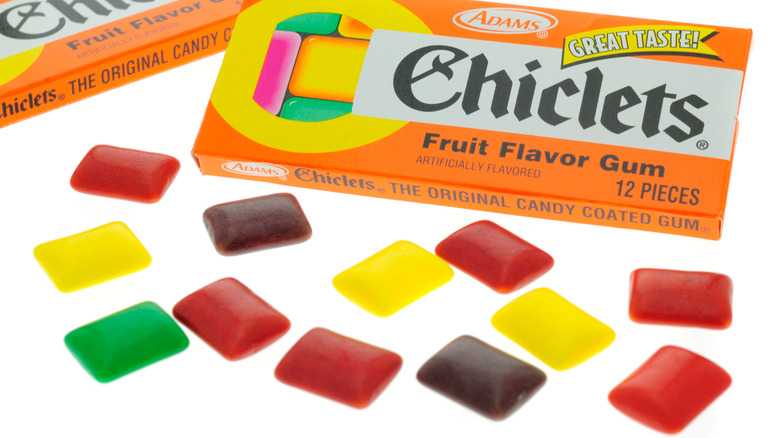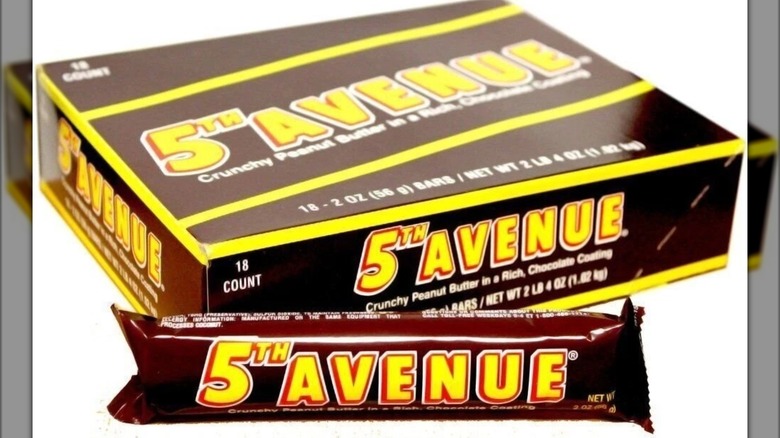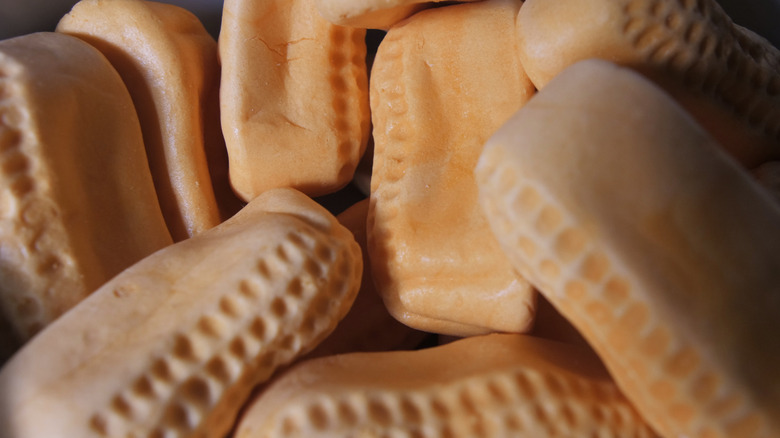14 Old-School Halloween Candies You Don't See Passed Out Anymore
We may receive a commission on purchases made from links.
Halloween candy is a relatively new concept. Instead, cookies and snacks like nuts and fruit were given out to trick-or-treaters, but candy didn't make its way onto the scene in a major way until the 1920s, finally catching on in the early 1950s. But there have been enough generations of trick-or-treaters and Halloween parties that the candies involved have changed over time, too. Some old-school options like candy corn are still common, but others are fading into obscurity — or may already be gone.
Many of these candies were popular in their time. But the candy industry isn't frozen in amber, either. Variety improved through the 20th century, with a dizzying array of new flavors and types of candy that people in the 1920s could not have imagined. It's possible that some of the rarer classics simply couldn't keep up with the competition anymore.
But some old-school Halloween candies may be better off left in the past. Just as candy preferences change over time, so too do society's standards. Several candies on this list were once quite well-liked, until they were deemed inappropriate for children and virtually vanished altogether, and some were just plain gross.
1. Mary Jane peanut butter candies
Mary Jane peanut butter candies are a simple, taffy-like candy from 1914, tasting of both peanut butter and molasses. Molasses was once a common candy ingredient, but began to be replaced by refined sugar, which was newly cheap after World War I.
2. Candy buttons
Crunchy, fruity candy buttons first became popular in the 1930s as a simple, affordable treat for Depression-era Americans. The exact origin of these sweets stuck to paper is unknown, but they remained popular through the 1970s and are now considered a vintage treat, still sold at some old-school candy stores.
3. Candy cigarettes
Candy cigarettes have a controversial history. These chalky white sticks of crunchy sugar were once ubiquitous and even imitated real cigarette brands, but as the dangers of smoking became widely known, giving children candy that let them pretend to smoke seemed like a bad idea.
4. Boston Baked Beans
Boston Baked Beans are neither baked nor beans, but actually sugar-coated peanuts of an unknown origin. They're not from Boston, either: Although once made by several companies, the lone remaining manufacturer is in Chicago.
5. Bubble Beeper gum
Bubble Beeper gum was forgettable in itself, but the real draw was the beeper-shaped package, which allowed kids to pretend they had a real one. But as beepers became obsolete, so too did Bubble Beeper gum, one of the discontinued '90s foods we don't miss.
6. Chick-O-Stick
Chick-O-Stick is a vintage 1950s candy still made by the Texas-based Atkinson Candy Company, featuring a crunchy mixture of peanut butter, honeycomb, and toasted coconut. It is commonly compared to a Butterfinger without the chocolate coating — and, as its curious name suggests, it was intended to resemble chicken bones.
7. Jujyfruits
Largely unchanged since their 1920 debut, Jujyfruits are fruit and vegetable-shaped chews unique in that their shapes do not correspond with flavors or colors. Of the items on this list, Jujyfruits are the ones you're most likely to find sold in supermarkets and corner stores across the U.S.
8. Licorice pipes
Licorice pipes were invented in the 1920s and resemble a small black pipe, complete with red sugar to imitate a lit bowl of tobacco. Similar to the gradual demise of candy cigarettes, these too eventually fell into obscurity — though they remain somewhat popular in Norway, where black licorice is far more popular than it is in the States.
9. Nik-L-Nip mini drinks
Nik-L-Nips are a vintage candy that tells you how to enjoy it: Spend a nickel (its original price point) and nip the top off a wax bottle to drink what's inside. And although it has no flavor, the bottle can be chewed like gum.
10. Strawberry Pistols
Strawberry Pistols are a classic red licorice and fondant candy from Sweden, but little else is known about their origin. The name comes from their resemblance to a revolver chamber loaded with little white cartridges.
11. Space Dust
Born as a powdered form of Pop Rocks, Space Dust saw initial success until parents noted similarities to angel dust, a street name for the dangerous hallucinogen PCP. General Mills changed the name to Cosmic Candy, but the controversy and rumors endured, and it was discontinued in 1982.
12. Chiclets
Chiclets are a candy-coated gum brand that emerged in the early 1900s and are named after chicle, their key, sap-like ingredient. It was among the first candy-coated gums but is today better known for sticking to chicle for its chewiness, rather than the artificial bases adopted by more popular gum brands in the mid-20th century.
13. 5th Avenue
5th Avenue is a bar of crunchy, chocolate-coated peanut butter that took its name from the Reading, Pennsylvania, address of Ludens, the candy company that invented it in 1936. Hershey bought the company 50 years later and shortly thereafter removed 5th Avenue's original almond topping, though you can still buy these candy bars (minus the almonds) today.
14. Circus peanuts
Marshmallow circus peanuts are another vintage candy of unknown origin, though today the biggest manufacturers are Brach's, Melster, and Spangler, all known for classic candy lineups like peppermints and hard caramels. Circus peanuts and their unexpected banana flavor may not be popular anymore, but we probably wouldn't have Lucky Charms (or other cereal marshmallows) without them either.
